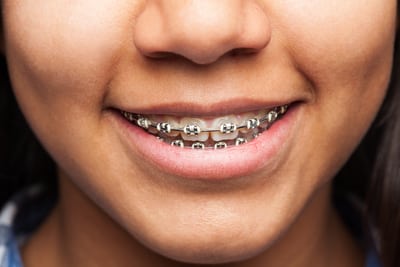Child braces: When to see an orthodontist and treatment time frames

The question parents and children most often ask their orthodontist about braces is, “How long will my braces be on for?” This is similar to asking “How long is a piece of string?”
Treatment times depend on the particular combination of dental issues in need of correction. Whether the treatment is for simple crowding or for a more complex case of impacted teeth needing to be aligned, the best way of answering the question is to consider braces in three lifetime phases.
Phase I treatment happens at ages 6 to 10. At this age a child has a mixture of adult and baby teeth. It is important for the child to be assessed by a specialist orthodontist so that any dental anomalies can be corrected and optimal conditions can be set up to enable adult teeth to erupt correctly in teenage years. Whether it be correction of cross-bites for function, monitoring facial growth or guidance of permanent teeth and space maintenance, it is fair to say that Phase I treatment with braces can take anywhere from 12 to 15 months.
Phase II treatment happens from ages 11 and up. These so-called “teenage braces” can be fitted when all baby teeth have been lost, enabling effective alignment of the patient’s adult teeth. Unfortunately many parents are unaware of the importance of Phase I treatment, meaning that when their child does present to our specialist orthodontist for teenage braces, a functional problem is detected that should ideally have been corrected earlier. This may make treatment with teenage braces a little more complex and hence more prolonged. In general most Phase II child braces cases are completed in approximately 18 to 24 months.
With any orthodontic work, successful completion of both Phase I and Phase II child braces treatments depend on a combined effort between the orthodontist and the patient. Factors that may alter treatment lengths include making regular visits to the orthodontist every 6 to 8 weeks, maintaining the good condition of braces, eating suitable foods to prevent breakages, wearing elastics as instructed and diligently sticking to a cleaning regimen.
Following the two treatment phases, the final child braces phase – retention – is another important one that some parents and children may not be aware of. Once orthodontic treatment is complete, retainers are used to maintain the teeth in their new positions. At this stage another golden question arises: “How long do I have to wear my retainers?”
The answer is that retainers really should be a lifelong commitment. Teeth have a natural tendency to move as part of the ageing process. This is because teeth are held by ligaments that sit in the bone, and these ligaments have memory. If retainers are not used, newly aligned teeth will revert to their original position over time. Whether the patient wears a fixed retainer or a removable night retainer, it is important for the orthodontist to continue to monitor this phase even after treatment is finished. Here at Smile Solutions, all of our specialist orthodontists continue to monitor patients for two years after any completed orthodontic treatment.
So when you and your child have your initial consultation with an orthodontist, you will now be prepared for the fact that treatment lengths can vary. At Smile Solutions our Dental Board of registered specialist orthodontists will discuss with you the right treatment for your child and the expected treatment time.
